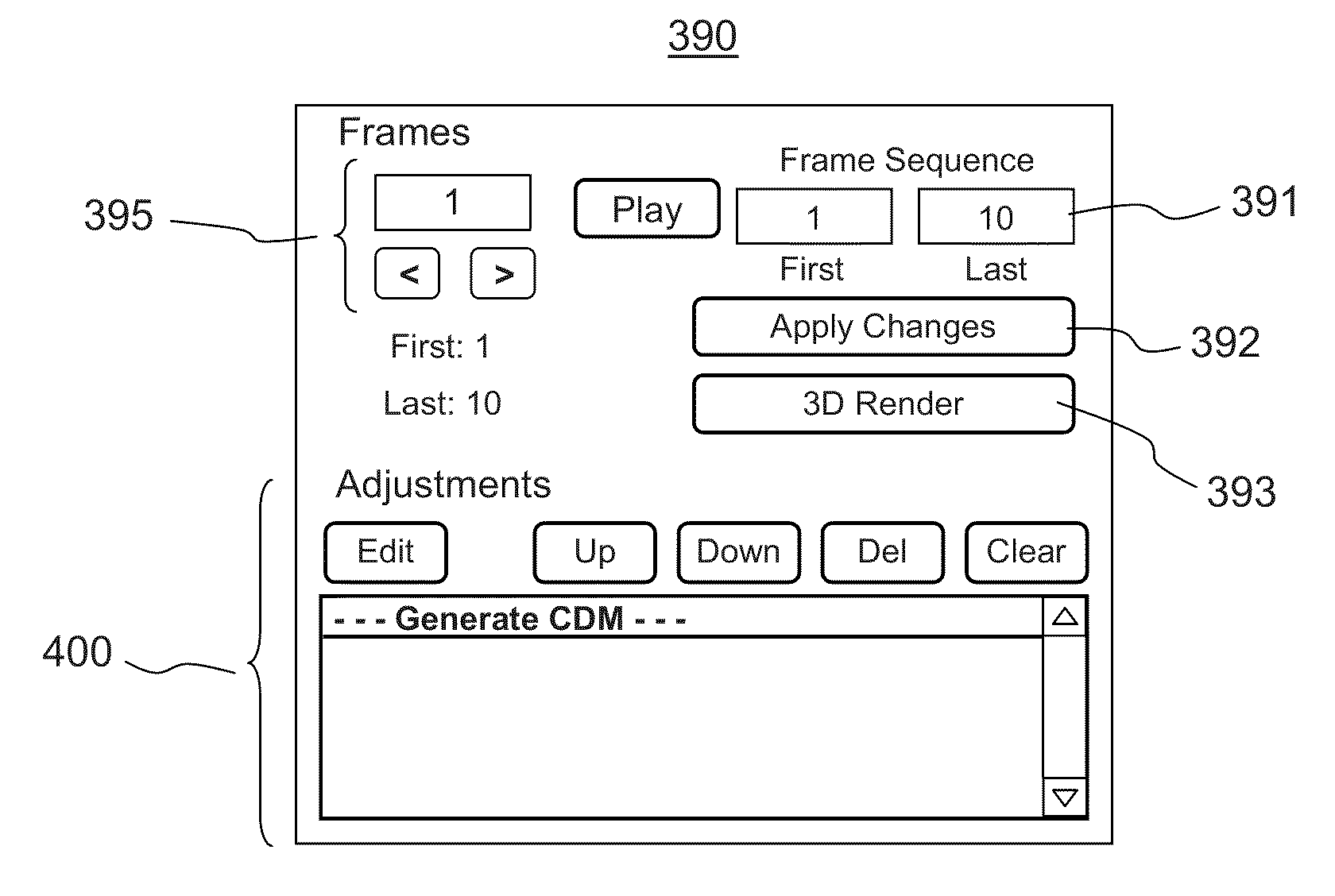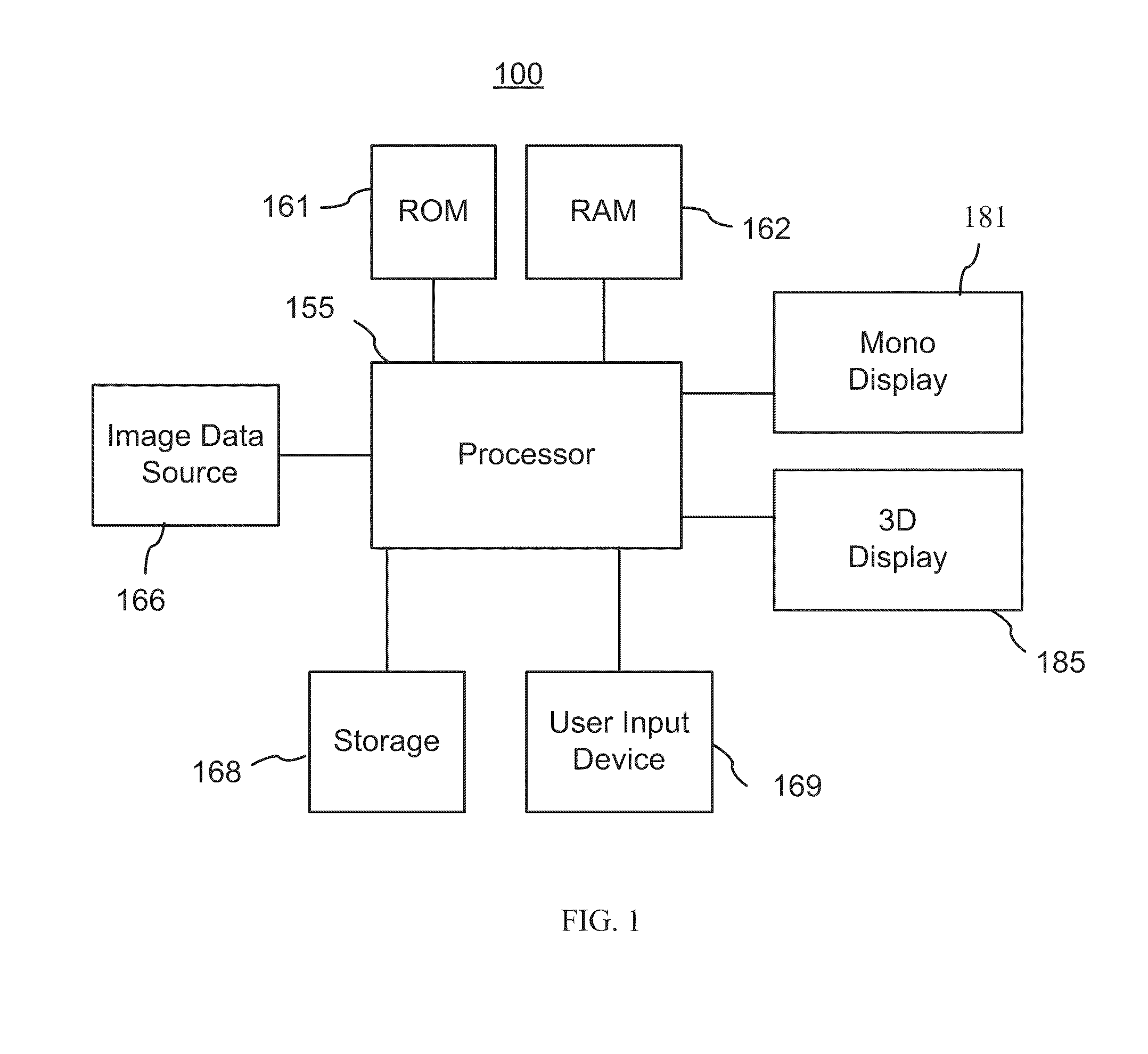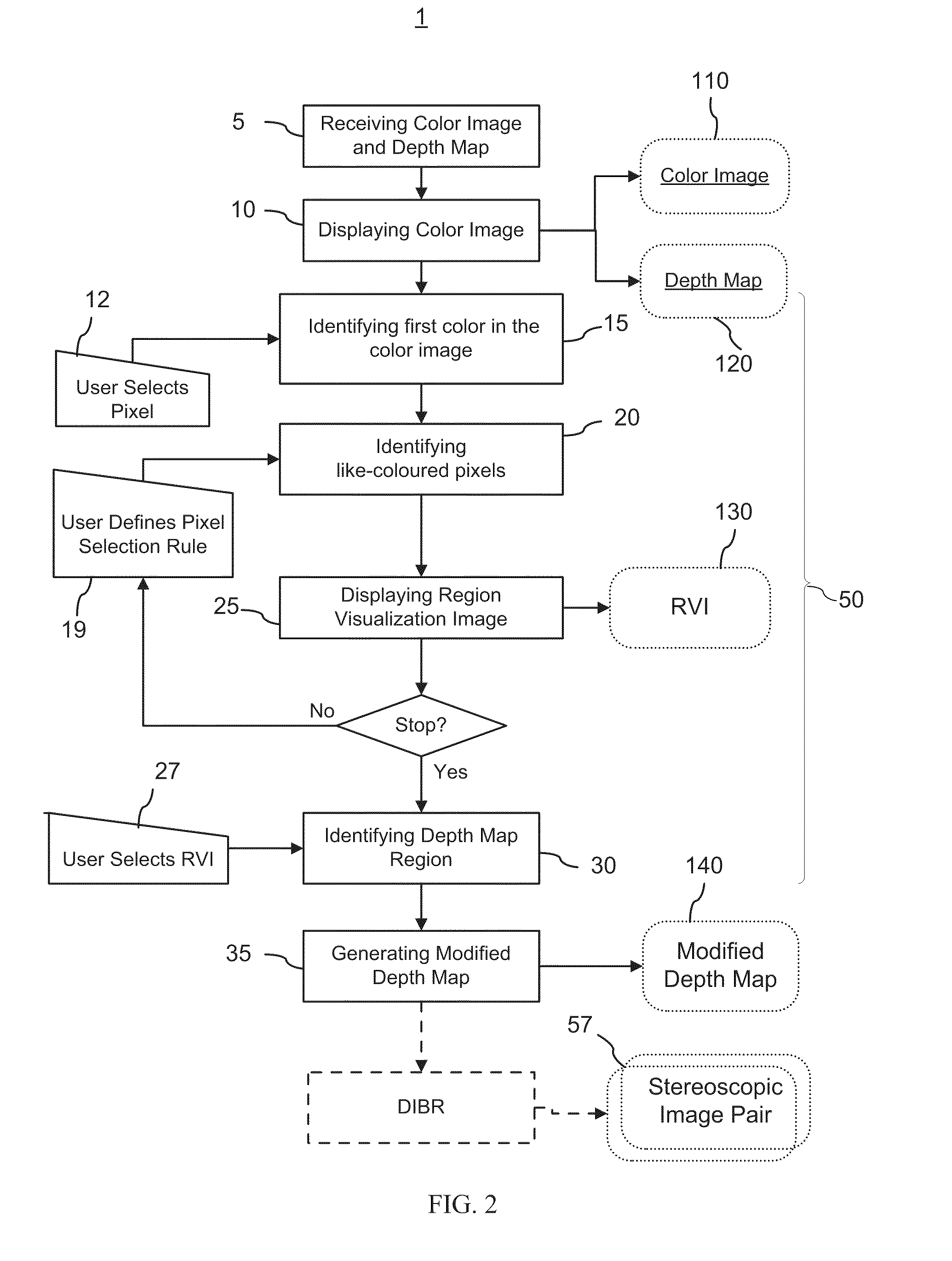Method and graphical user interface for modifying depth maps
a technology of depth information and graphical user interface, which is applied in the field of methods and systems for generating depth information, can solve the problems of high hardware and/or cumbersome recording procedures, difficult to accurately obtain accurate depth maps, and difficult to achieve accurate depth maps
- Summary
- Abstract
- Description
- Claims
- Application Information
AI Technical Summary
Benefits of technology
Problems solved by technology
Method used
Image
Examples
Embodiment Construction
[0032]The invention will be described in connection with a number of exemplary embodiments. To facilitate an understanding of the invention, many aspects of the invention are described in terms of sequences of actions to be performed by functional elements of a video-processing system. It will be recognized that in each of the embodiments, the various actions including those depicted as blocks in flow-chart illustrations and block schemes could be performed by specialized circuits, for example discrete logic gates interconnected to perform a specialized function, by computer program instructions being executed by one or more processors, or by a combination of both. Moreover, the invention can additionally be considered to be embodied entirely within any form of a computer readable storage medium having stored therein an appropriate set of computer instructions that would cause a processor to carry out the techniques described herein. Thus, the various aspects of the invention may be...
PUM
 Login to View More
Login to View More Abstract
Description
Claims
Application Information
 Login to View More
Login to View More - R&D
- Intellectual Property
- Life Sciences
- Materials
- Tech Scout
- Unparalleled Data Quality
- Higher Quality Content
- 60% Fewer Hallucinations
Browse by: Latest US Patents, China's latest patents, Technical Efficacy Thesaurus, Application Domain, Technology Topic, Popular Technical Reports.
© 2025 PatSnap. All rights reserved.Legal|Privacy policy|Modern Slavery Act Transparency Statement|Sitemap|About US| Contact US: help@patsnap.com



